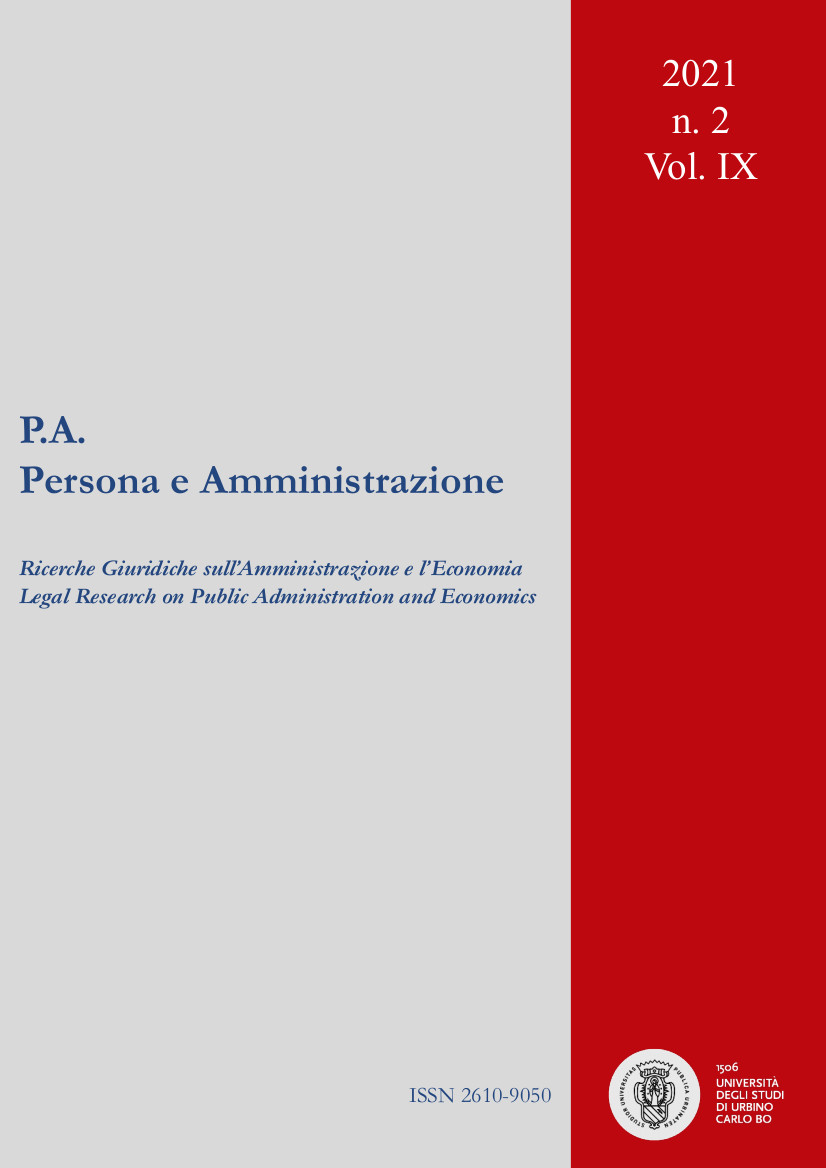Abstract
The article aims to investigate the potential of horizontal subsidiarity for overcoming inequalities in the inner areas of the country and in the urban suburbs, both characterized by conditions of hardship capable of limiting the enjoyment of social rights.
To this end, the analysis starts from the framework of the public policies adopted for the socio-economic development of the two territorial dimensions considered, which, although characterized by problems of different nature and origin, are united by the benefits that can be obtained from the application of the principle of horizontal subsidiarity pursuant to art. 118 co. 4 of the Constitution
The declinations of the principle of horizontal subsidiarity vary a lot depending on the territorial perimeter considered. While for inner areas, such principle may be fulfilled itself through tools that favor, using a place-based approach, the protagonism of local communities in the definition and implementation of interventions, enhancing their potential for endogenous development; for urban peripheries, it can be best achieved through the implementation of collaborative and shared administration models already tested in some local realities, as well as with the promotion of practices related to the sharing economy paradigm.
Having outlined the tools that local authorities can use to promote the contribution of civil society, the reconstruction of the constitutional framework - in particular the connections of horizontal subsidiarity with the principle of pluralism, solidarity and substantial equality - will make it possible to conclude on the need for public policies aimed at promoting civic activism for the development of the territories.

This work is licensed under a Creative Commons Attribution 4.0 International License.
